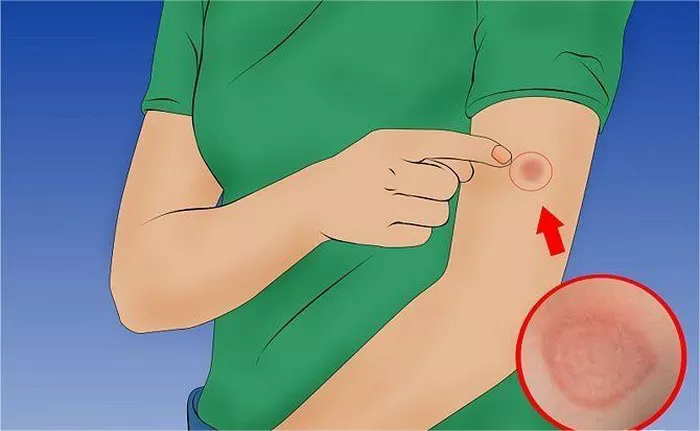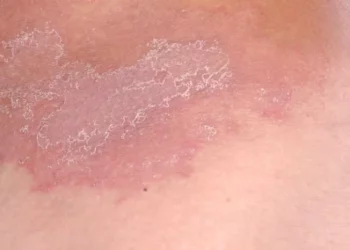Ringworm is a common fungal infection that can affect the skin, scalp, and nails. It is named for its ring-like appearance on the skin. Many people wonder about the contagiousness of ringworm, especially regarding its transmission before symptoms are visible. In this article, we will explore what ringworm is, how it spreads, and whether it is contagious before symptoms appear.
What is Ringworm?
Understanding the Fungal Infection
Ringworm is not caused by a worm but by fungi called dermatophytes. These fungi thrive on keratin, a protein found in the skin, hair, and nails. The most common types of fungi that cause ringworm include:
- Trichophyton rubrum
- Microsporum canis
- Trichophyton mentagrophytes
Symptoms of Ringworm
The symptoms of ringworm can vary based on the affected area. Common signs include:
Red, itchy patches: The skin may become red and inflamed.
Ring-shaped rash: The rash often has a circular shape with raised edges.
Scaly skin: The affected area may become dry and flaky.
Hair loss: If ringworm affects the scalp, it can lead to patchy hair loss.
How Does Ringworm Spread?
Direct Contact
Ringworm is highly contagious. It spreads primarily through direct skin-to-skin contact with an infected person. This can occur during activities such as:
Touching an infected person: Close contact during sports or physical activities increases the risk.
Sharing personal items: Towels, clothing, and grooming tools can transmit the infection.
Indirect Contact
Ringworm can also spread indirectly through contaminated surfaces or objects, such as:
Public places: Gyms, swimming pools, and locker rooms can harbor the fungus.
Pet contact: Animals, especially cats and dogs, can carry ringworm. Humans can become infected through petting or handling infected animals.
Is Ringworm Contagious Before Symptoms Appear?
The Contagious Period
One of the most critical aspects of ringworm is its contagious nature. Research suggests that ringworm can be contagious before visible symptoms appear. Here’s what you should know:
Incubation period: The incubation period for ringworm typically ranges from 4 to 14 days. This is the time between exposure to the fungus and the appearance of symptoms. During this period, individuals may be carriers of the fungus without showing any signs of infection.
Asymptomatic carriers: Some people may carry the fungus and not develop symptoms at all. These asymptomatic individuals can still spread the infection to others.
How Contagion Occurs
During the incubation period, the following can occur:
Fungal shedding: Infected individuals may shed fungal spores even before they notice any rash or symptoms. This shedding can occur through skin cells or hair.
Environmental contamination: If an infected person shares personal items or spends time in common areas, the fungi can contaminate surfaces. This increases the risk of transmission.
Preventing the Spread of Ringworm
Personal Hygiene
Good hygiene practices can significantly reduce the risk of contracting ringworm. Consider the following tips:
Wash hands regularly: Use soap and water, especially after touching animals or public surfaces.
Avoid sharing personal items: Do not share towels, clothing, or grooming tools.
Keep skin dry: Fungi thrive in moist environments. Dry your skin thoroughly, especially in warm areas like the armpits and groin.
Environmental Precautions
Disinfect surfaces: Regularly clean surfaces that may come into contact with the skin. This includes gym equipment, locker rooms, and shared spaces.
Limit exposure to infected animals: Be cautious when handling pets that may show signs of ringworm.
Recognizing Symptoms Early
Importance of Early Detection
Recognizing the symptoms of ringworm early can help prevent its spread. Pay attention to:
Itchy patches: If you notice persistent itching, especially in a circular pattern, seek medical advice.
Changes in hair or skin: Be vigilant about any unusual changes in your skin or scalp.
Seeking Medical Attention
If you suspect you have ringworm, consult a healthcare professional. Early treatment can help prevent further spreading. They may recommend:
Topical antifungal creams: Over-the-counter options are available, but prescription medications may be necessary for severe cases.
Oral antifungal medications: In more severe or widespread infections, oral medication may be prescribed.
Treatment Options for Ringworm
Topical Treatments
For mild cases of ringworm, topical treatments can be effective. These include:
Clotrimazole: An antifungal cream applied directly to the affected area.
Miconazole: Another topical antifungal that can help eliminate the infection.
Oral Medications
If the infection is extensive or does not respond to topical treatments, healthcare providers may prescribe oral antifungals, such as:
Terbinafine: Effective for treating various types of fungal infections.
Griseofulvin: Often used for scalp infections.
Home Remedies
Some people opt for home remedies, though these should be used with caution and preferably in consultation with a healthcare provider. Popular options include:
Tea tree oil: Known for its antifungal properties, it can be applied to the affected area.
Apple cider vinegar: Some believe it can help soothe the skin and reduce fungal growth.
Conclusion
Ringworm is a highly contagious fungal infection that can spread before symptoms appear. Understanding how it spreads and taking preventive measures can help reduce the risk of transmission. Good hygiene practices, early detection, and appropriate treatment are essential in managing ringworm effectively. If you suspect you have ringworm, consult a healthcare professional for guidance and treatment options.
By staying informed and vigilant, you can protect yourself and others from this common infection.
Related topics:


























